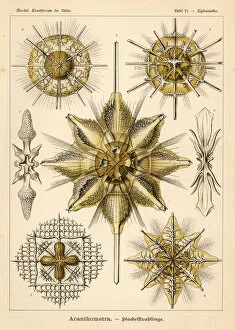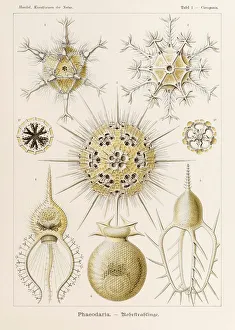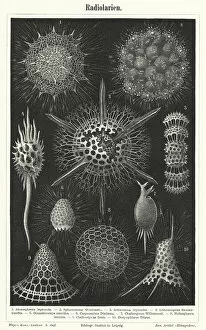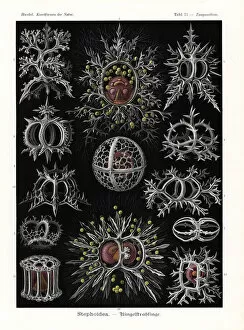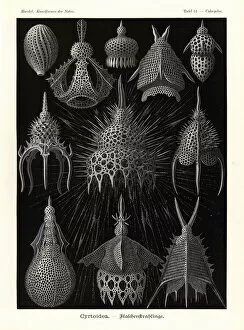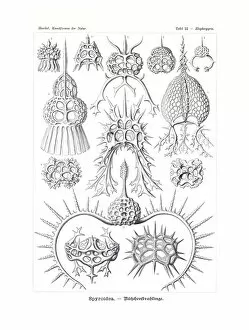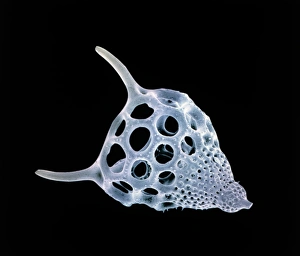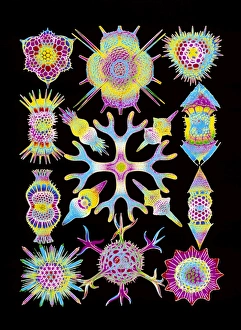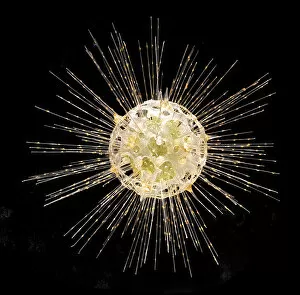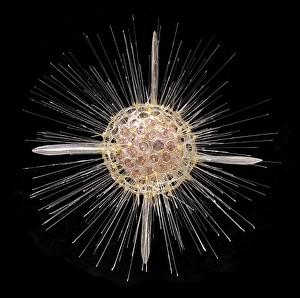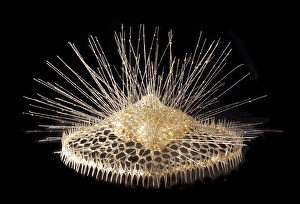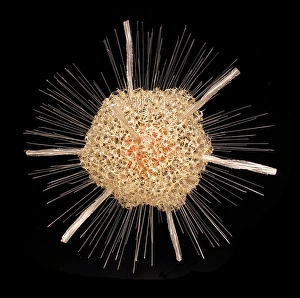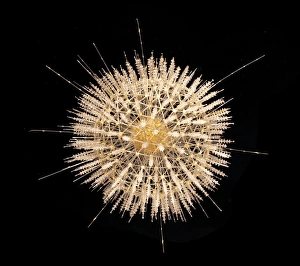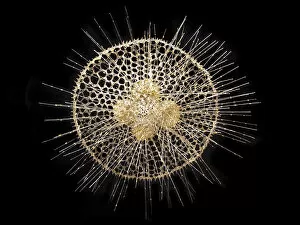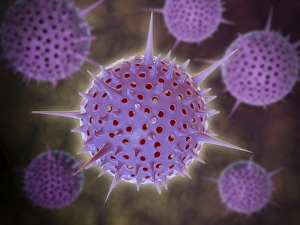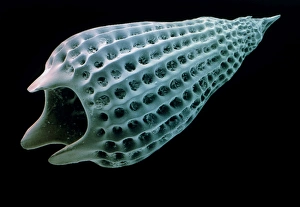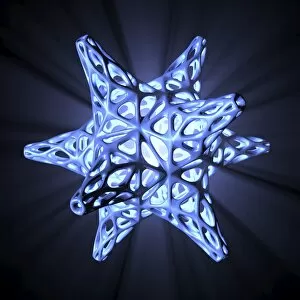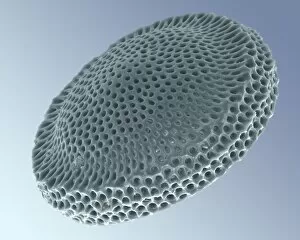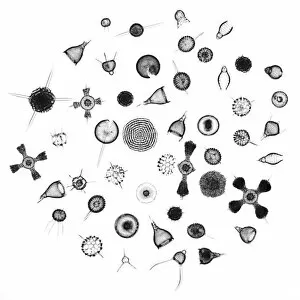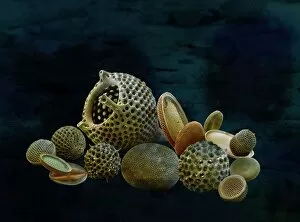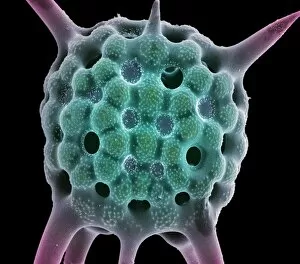Radiolaria Collection
Radiolaria, a fascinating group of marine organisms, are microscopic creatures that belong to the kingdom Protista
All Professionally Made to Order for Quick Shipping
Radiolaria, a fascinating group of marine organisms, are microscopic creatures that belong to the kingdom Protista, and are known for their intricate and beautiful silica skeletons, which come in various shapes and designs. One such example is Acanthophracta, a subclass of radiolarians characterized by their spiky skeletal structures. Acrosphaera radiolarian is another mesmerizing species within this diverse group. When observed under a scanning electron microscope (SEM), its delicate features become even more apparent. The SEM image reveals the intricate details of its spherical skeleton, showcasing nature's remarkable artistry. Acantharia Radiolaria protozoa species exhibit unique characteristics with their long spines protruding from their central body. These stunning creatures can be found throughout the world's oceans, adding beauty to the underwater realm. Dorataspis diodon is yet another captivating radiolarian species that showcases diversity within this group. Its distinctive skeletal structure resembles a spiked ball, making it stand out among other members of Radiolaria. Aulacantha scolymantha is an enchanting radiolarian with its complex skeletal framework resembling an ornate crown or chandelier-like structure. This intricate design demonstrates the incredible intricacy found in nature's creations. Plate 1 Circogonia Phaeodaria from Kunstformen der Natur (Art Forms in Nature) illustrated by Ernst Haeckel provides us with a glimpse into the astonishing variety of radiolarians present on our planet. Haeckel's illustrations beautifully capture these tiny organisms' elegance and complexity through his meticulous attention to detail. The engraving titled "Radiolaria" further emphasizes the allure surrounding these microorganisms. It serves as a reminder of how they have captivated scientists and artists alike throughout history due to their exquisite forms and patterns. Stephoidea radiolarians or radiozoa depicted in color lithographs from 1899-1904 showcase the vibrant diversity within this group.



